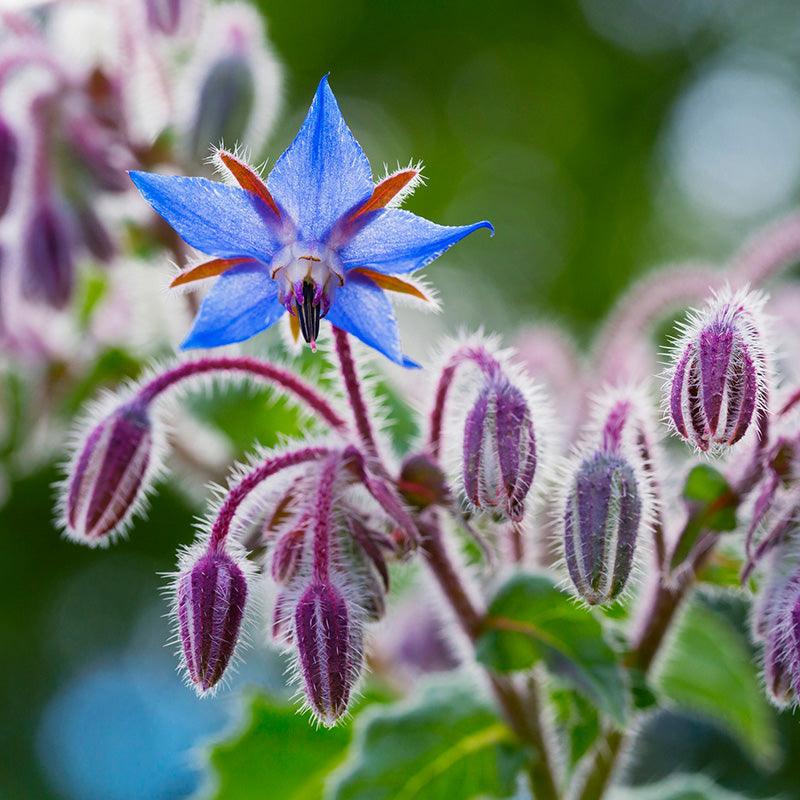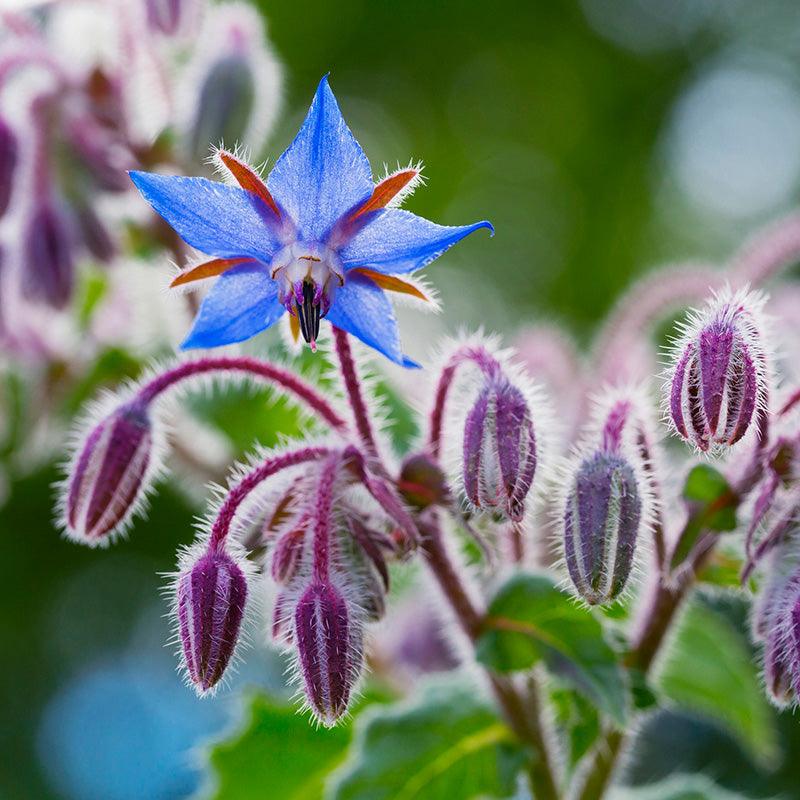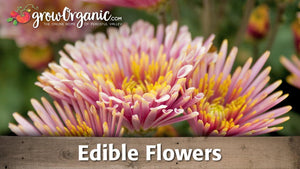Item Number: PV134
Organic Borage
Edible Ornament for Pollinator-Filled Gardens
An old-fashioned ornamental herb with edible foliage and vibrant blue, star-shaped flowers adored by pollinators. Known as the 'father of roughness' due to its hairy leaves. Both the foliage and the borage flower are edible, imparting a fresh cucumber-like flavor to iced teas and other drinks. Meanwhile, its leaves are best eaten when tender or cooked like spinach. Ideal for butterfly gardens, it attracts pollinators to vegetables, making it a delightful addition for both aesthetic and functional purposes.
Sustainably grown in 2.75" pots
Selecting the Right Location
Choose a sunny spot in your garden for planting borage starts. Borage thrives in full sunlight but can tolerate partial shade. Ensure that the soil is well-draining and fertile. Borage prefers loamy soil with good drainage and a pH between 6.0 and 7.0. Consider planting borage near other garden plants to attract pollinators such as bees and butterflies. Borage flowers are rich in nectar and act as a magnet for beneficial insects.
Planting Borage Starts
Plant borage starts when the soil temperature is around 50°F. Plant them at the same depth as they were in their containers. Water thoroughly after planting to help the roots establish in the soil.
Watering and Care
Once established, borage is relatively drought-tolerant and does not require frequent watering. However, consistent moisture is essential, especially during dry periods or when the plants are young. Water borage at the base of the plants to avoid wetting the foliage, which can increase the risk of fungal diseases. Mulch around borage plants to help retain soil moisture and suppress weeds. Organic mulches such as straw or compost work well.
Fertilizing
Borage is a light feeder and generally does not require heavy fertilization. However, incorporating compost into the soil before planting can provide the necessary nutrients for healthy growth. Avoid over-fertilizing borage, as excessive nitrogen can lead to lush foliage at the expense of flower production.
Harvesting Borage
Borage leaves and flowers are edible and have a mild cucumber-like flavor. Harvest leaves and flowers as needed throughout the growing season for use in salads, teas, and other culinary creations. To harvest borage leaves, simply pinch or snip them off the plant. For flowers, wait until they are fully open and then gently pluck them from the stem. Harvest borage leaves and flowers in the morning when they are at their freshest and most flavorful.
Pest and Disease Management
Borage is relatively pest-resistant and is rarely bothered by insects or diseases. However, it may occasionally attract aphids, caterpillars, or spider mites. Monitor borage plants regularly for signs of pest infestations and treat them promptly if necessary. Insecticidal soaps or neem oil sprays can help control pests without harming beneficial insects. Keep the garden clean and free of debris to reduce the risk of fungal diseases such as powdery mildew.
Companion Planting
Borage is an excellent companion plant for many garden vegetables and herbs. It attracts pollinators and beneficial insects, improves soil health, and may even help repel certain pests. Plant borage near tomatoes, squash, strawberries, and other garden plants to enhance their growth and productivity.
Growing borage starters is a rewarding endeavor that can enhance your garden and provide you with a versatile and beneficial herb. By following the tips and guidelines outlined in this guide, you can successfully grow borage and enjoy its many culinary and medicinal uses.
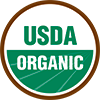

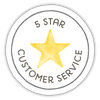

Check Your Zone Compatibility:
Compatible with your zone.
Growing Zone for

Our Guarantee To You
Since 1976, we've served our customers at every stage of growing. Please contact us at any time. We are happy to support and assist you.
Shipping Information
Shipping Information
Cannot ship to the following states: AK, HI, PR, VI, GU
Shipping Weight: 0.5 lb
Features
Features
- Attracts Bees/Butterflies
- Does Not Require Support
- Edible Flower
- Mild Flavor
- Open-Pollinated
- Requires Summer Water
- Suited to Warmer Climates
- Useful for Ornamental
Characteristics
Characteristics
Planting & Care
Planting & Care
Soil & Water: Plant in full sun, in well-draining soil. Borage does not require fertile soil, however, it performs best when organic matter is added. Provide even water throughout development. In hot climates, it may perform better with afternoon shade.
Planting & Growing: Plant starts directly when the soil reaches 50F.
Harvesting & Storage: Harvest the star-shaped flowers for use as a garnish on cakes, as a splash of color in a salad, or frozen in ice cubes.
Useful Information
Useful Information
Guarantee
Guarantee
We guarantee the perishable items we sell to be in good, viable condition when we sell them. Perishable items include, but are not limited to, garlic bulbs, flower bulbs, seed potatoes, onion sets & transplants, potted or bare root trees, vegetable crowns, etc. If your perishable item arrives in substandard condition, take photographs and please contact us within 3 days of the purchase date (or delivery date) and we will provide you with a refund of the purchase price (excluding shipping costs), or a replacement. Accordingly, we urge you to open any boxes marked as ""Perishable"" immediately upon receiving them and inspect the shipment thoroughly (do not crack open heads of garlic, we do not accept claims on cracked garlic). Because some perishable items can deteriorate very quickly, we cannot accept any claims beyond the 3-day time frame as it becomes too difficult to determine if these items were delivered in substandard condition, or if they turned into such substandard condition because of having been improperly cared for or stored once delivered.
Share
